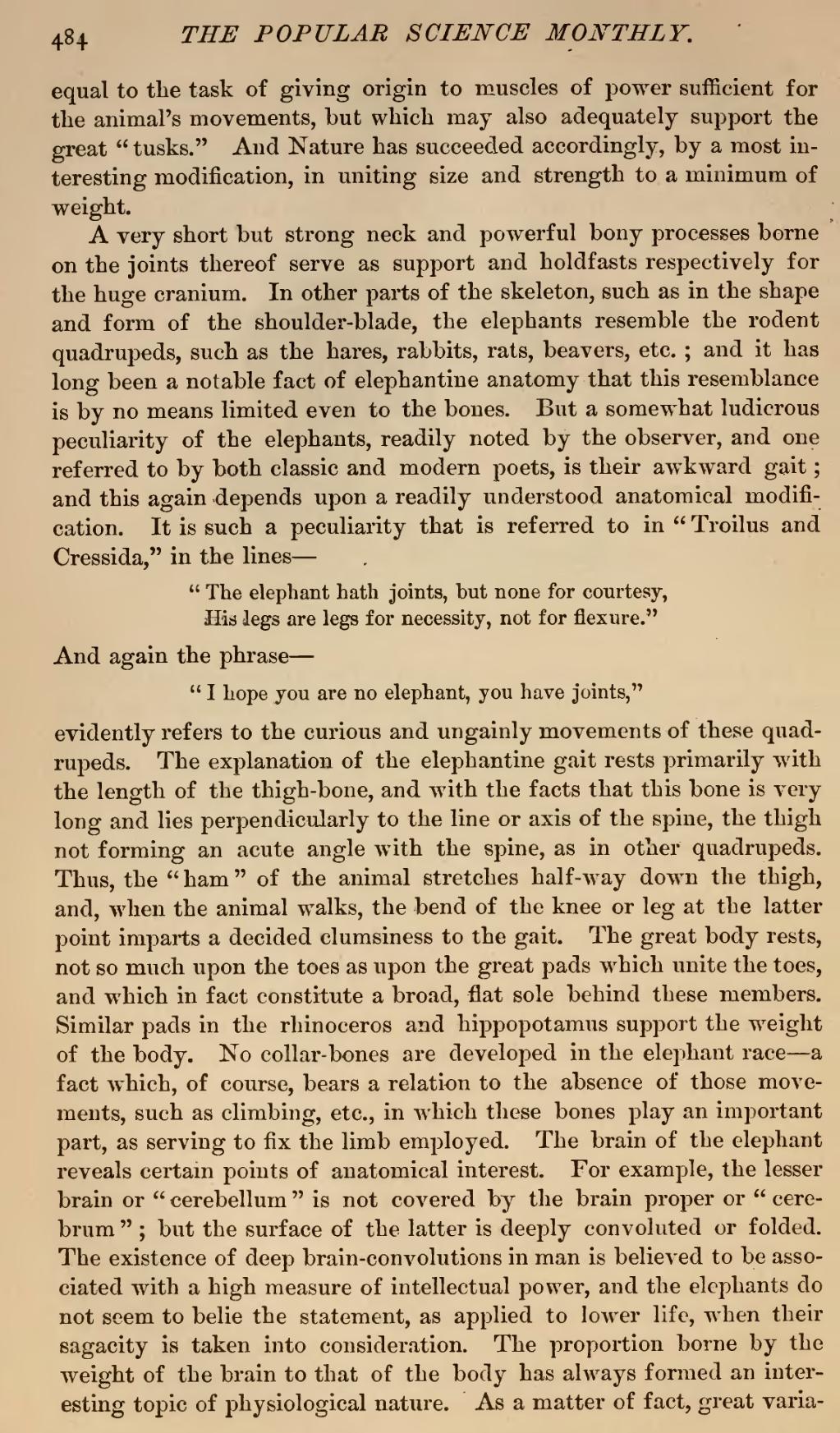equal to the task of giving origin to muscles of power sufficient for the animal's movements, but which may also adequately support the great "tusks." And Nature has succeeded accordingly, by a most interesting modification, in uniting size and strength to a minimum of weight.
A very short but strong neck and powerful bony processes borne on the joints thereof serve as support and holdfasts respectively for the huge cranium. In other parts of the skeleton, such as in the shape and form of the shoulder-blade, the elephants resemble the rodent quadrupeds, such as the hares, rabbits, rats, beavers, etc.; and it has long been a notable fact of elephantine anatomy that this resemblance is by no means limited even to the bones. But a somewhat ludicrous peculiarity of the elephants, readily noted by the observer, and one referred to by both classic and modern poets, is their awkward gait; and this again-depends upon a readily understood anatomical modification. It is such a peculiarity that is referred to in "Troilus and Cressida," in the lines—
His legs are legs for necessity, not for flexure."
And again the phrase—
"I hope you are no elephant, you have joints,"
evidently refers to the curious and ungainly movements of these quadrupeds. The explanation of the elephantine gait rests primarily with the length of the thigh-bone, and with the facts that this bone is very long and lies perpendicularly to the line or axis of the spine, the thigh not forming an acute angle with the spine, as in other quadrupeds. Thus, the "ham" of the animal stretches half-way down the thigh, and, when the animal walks, the bend of the knee or leg at the latter point imparts a decided clumsiness to the gait. The great body rests, not so much upon the toes as upon the great pads which unite the toes, and which in fact constitute a broad, flat sole behind these members. Similar pads in the rhinoceros and hippopotamus support the weight of the body. No collar-bones are developed in the elephant race—a fact which, of course, bears a relation to the absence of those movements, such as climbing, etc., in which these bones play an important part, as serving to fix the limb employed. The brain of the elephant reveals certain points of anatomical interest. For example, the lesser brain or "cerebellum" is not covered by the brain proper or "cerebrum"; but the surface of the latter is deeply convoluted or folded. The existence of deep brain-convolutions in man is believed to be associated with a high measure of intellectual power, and the elephants do not seem to belie the statement, as applied to lower life, when their sagacity is taken into consideration. The proportion borne by the weight of the brain to that of the body has always formed an interesting topic of physiological nature. As a matter of fact, great varia-

